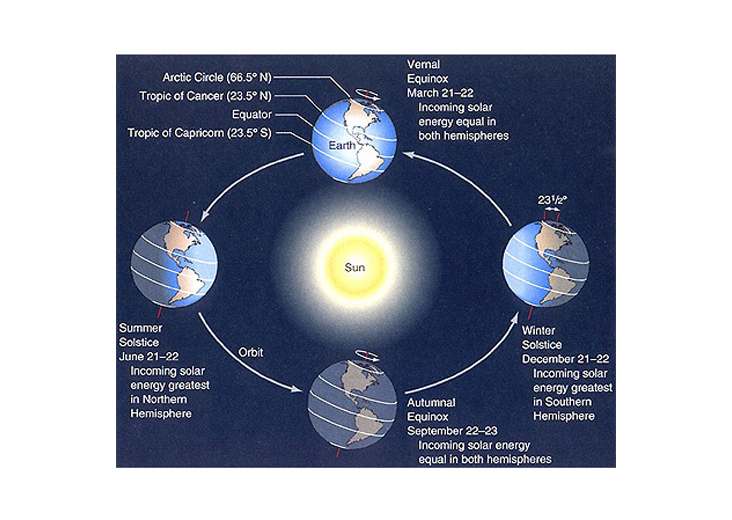The Winter Solstice occurs usually between December 20-23 with the sun directly overhead the Tropic of Capricorn. This results in the North Pile being tilted the furthest away making it the shortest day of the year followed by the longest night. The further north you live during winter means less daylight during the winter. Some areas in Alaska or Scandinavia can be nearly dark or near dark during this period. By contrast, those in the Southern Hemisphere celebrate the Summer Solstice, as it marks the beginning of summer. Which is why while people shiver in Philadelphia and New York for Christmas but down in Australia, Christmas is celebrated outdoors with a barbeque.

Image: NASA
Many cultures observed the Winter Solstice as it marked an important time in the agricultural cycle. By this time all crops and livestock had been prepared for winter. Important foodstuffs were stored for the months when virtually nothing grew. Wine and beer, which had been fermenting during the year, was ready. Cattle and pigs would often be killed at the start of winter so they would not have to be fed during this time. The early months of winter were tough in many places and often called the “famine months” since little food was to be found. Many cultures observed the Winter Solstice as a renewal or that the year was reborn. For out of the seeming withdrawal of the sun, it would come back just as strong and powerful as before. Thus, the Winter Solstice was seen by many as the start of a new year such as the old Roman Feast of the Unconquered Sun (Sol Invictus) which happened around the 25th of December.
For more information:
“Winter Solstice – Date, Definition and Traditions | HISTORY.” HISTORY, 21 Sept. 2017, www.history.com/topics/natural-disasters-and-environment/winter-solstice.
“Winter Solstice | Definition and Diagrams.” Encyclopedia Britannica, 21 Dec. 2023, www.britannica.com/science/winter-solstice.
Donvito, Tina. “13 Fascinating Winter Solstice Traditions Around the World.” Reader’s Digest, 20 Dec. 2023, www.rd.com/list/winter-solstice-traditions. Accessed 21 Dec. 2023.
